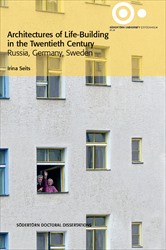The modernist concept of life-building as an architectural method for improving the conditions of everyday life originated in Europe during the 1920s. This book explores three modes of functionalism by way of a comparative analysis of both the theoretical discourses and architectural practices associated with functionalism in Russia, Germany, and Sweden. These three countries made significant contributions to the application of functionalism within mass housing construction, the overarching purpose of which was to transform the traditional home into a rational living space.
This study provides both close readings of foundational modernist texts as well as an empirical study of the avant-garde heritage in Russia, Germany, and Sweden. As a special case study, a visual analysis of IKEA catalogues is presented, the purpose of which is to provide an illustrated history of modernist aesthetics within mass produced living spaces, from the era of functionalism up to the present day.
Irina Seits is a researcher at Södertörn University (Sweden) with affiliation to the Centre for Baltic and East European Studies (CBEES). She received her MA in Art History from St. Petersburg State University and the European University at St. Petersburg. Her interests include the architectural and urban theory of modernism, the cultural heritage preservation, and the aesthetics of everyday life.


